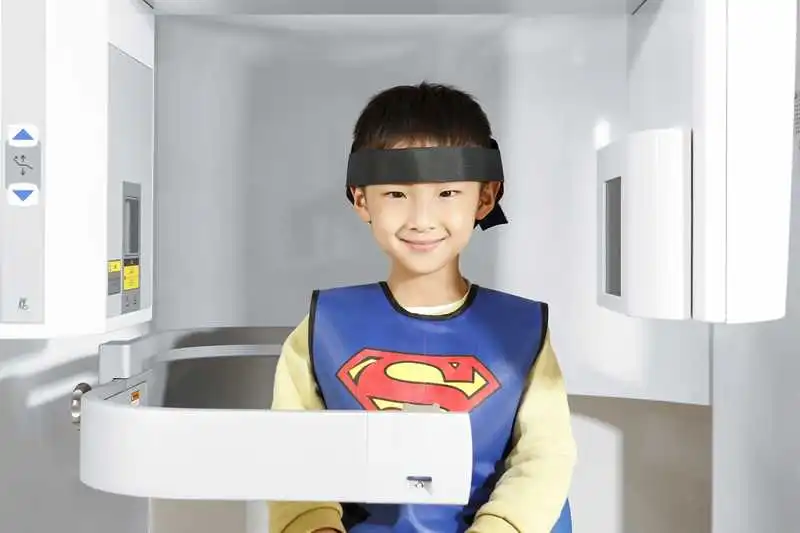The radiation risks of CT scans remain a persistent concern. A recent study published in an international academic journal suggests that CT-induced cancers may account for 5% of annual new cancer cases.
As reported in JAMA Internal Medicine, the debate intensifies: Is CT imaging—the "gold standard" in diagnostics—a lifesaving tool or a hidden threat?
 01 The Indispensable "X-ray Vision" of Medicine
01 The Indispensable "X-ray Vision" of Medicine
CT scans are pivotal in modern diagnostics, using X-rays to create detailed cross-sectional images of the body. While CT does involve ionizing radiation, the key lies in understanding dosage. The International Commission on Radiological Protection sets a safety threshold of
≤100 millisieverts (mSv) per scan.
In practice:
A standard chest CT delivers
6–8 mSv.
A head/neck CT typically uses
2–6 mSv—far below dangerous levels.
True risks arise in two scenarios:
Frequent repeated scans within short periods, allowing radiation effects to accumulate.
Vulnerable groups: Pregnant women (fetal sensitivity) and children/adolescents (rapid cell division).
02 How to Minimize CT Radiation Exposure
CT use should follow the
"as needed and in moderation" principle:
For asymptomatic, low-risk individuals: Avoid routine CT screenings. Limit scans to
1–2 times/year if medically necessary.
Pre-scan: Discuss medical history and allergies with your doctor to assess necessity.
During scans: Wear protective gear (lead aprons, thyroid collars) to reduce exposure.
Post-scan: Preserve imaging records to avoid repeat scans across hospitals.
The optimal solution?
Low-dose CT technology—now enhanced for ear, nose, and throat (ENT) diagnostics.
03 CBCT: Clearer Imaging, Safer Scans
At Renshu ENT Clinic, a child with sinusitis-induced mouth breathing undergoes a CT scan. No claustrophobic tunnel, no deafening noise—just a quiet 20-second rotation of a ring-shaped device.
This is
Cone Beam CT (CBCT), a revolutionary 3D imaging system tailored for ENT and maxillofacial diagnostics. It redefines safety and precision with three groundbreaking advantages:
Advantage 1: Ultra-Low Radiation Dose
CBCT uses
cone-beam X-ray technology, with single-scan doses as low as
4 microsieverts (μSv)*—equivalent to one hour of in-flight cosmic radiation.
Ideal for chronic sinusitis or adenoid hypertrophy in children, easing parental concerns about developmental risks.
Data source: Carestream Health (Internal Code: GG180044)
*Flight radiation: ~5 μSv/hour (China Science Exploration Center)*
Advantage 2: 3D Imaging Unlocks Hidden Details
Traditional 2D CT often misses subtle lesions due to overlapping structures. CBCT’s 3D scans capture
multi-angle, high-resolution cross-sections, revealing even tiny abnormalities.
Applications:
Sinusitis: Visualizes inflammation deep in sinus openings (beyond endoscope reach).
Deviated septum: Quantifies nasal deviation and turbinate hypertrophy.
Adenoid hypertrophy: Maps airway obstruction and sinus inflammation.
Pre-surgical planning: Guides precise tissue removal while preserving function.
Advantage 3: Open Design, Stress-Free Scans
Open-frame setup eliminates claustrophobia, accommodates wheelchairs, and lets children see their parents during scans.
20–25-second scans reduce anxiety and improve compliance—no more struggling to calm a fearful child.
Back to the question: Are CT scans safe?
The answer lies in
risk-benefit balance. When doctors recommend CT, its diagnostic value outweighs potential risks.
CBCT elevates this balance:
Safer doses for sensitive groups.
3D precision for accurate diagnoses.
Patient-friendly design for all ages.
In the quest for clarity, CBCT transforms imaging from a necessity into a reassurance—one scan at a time.
